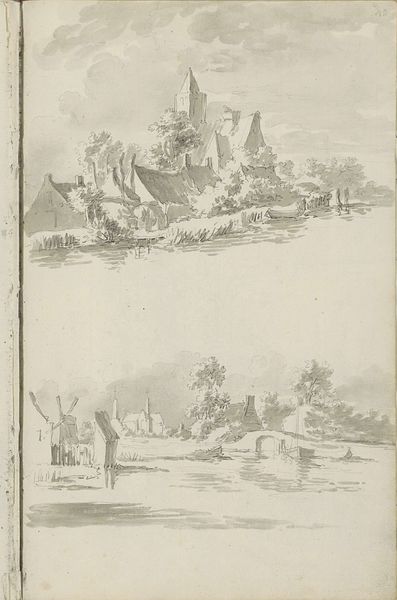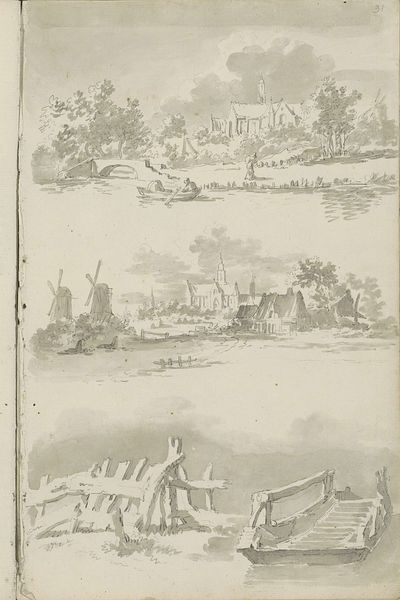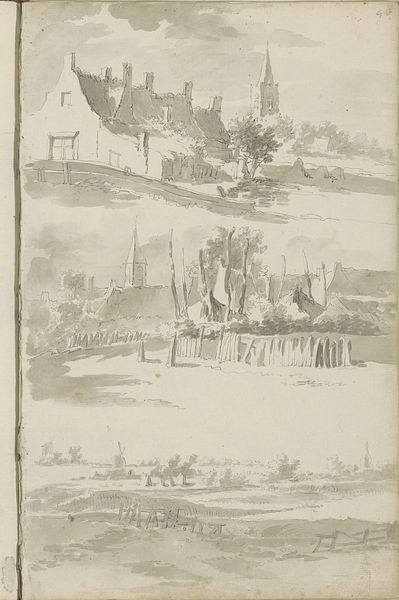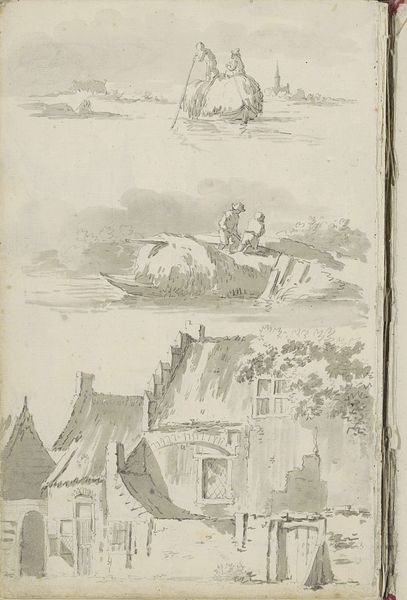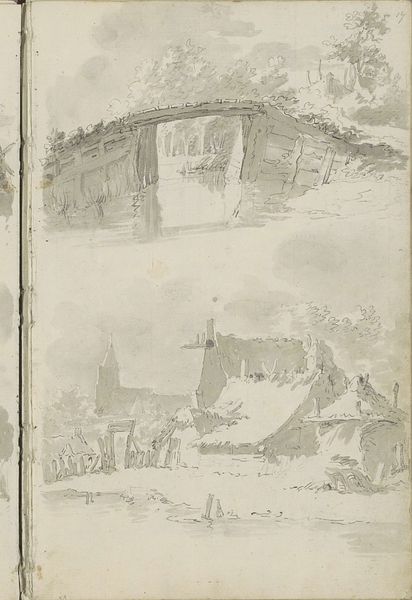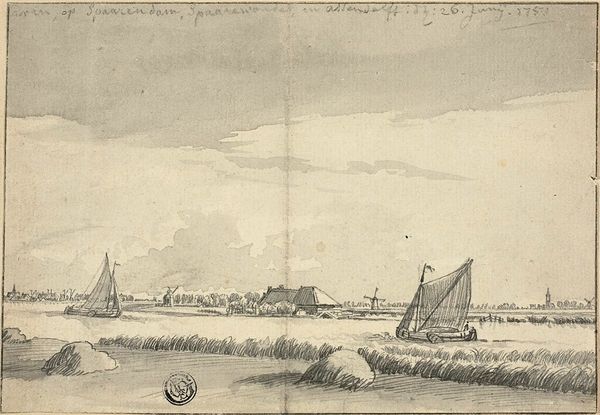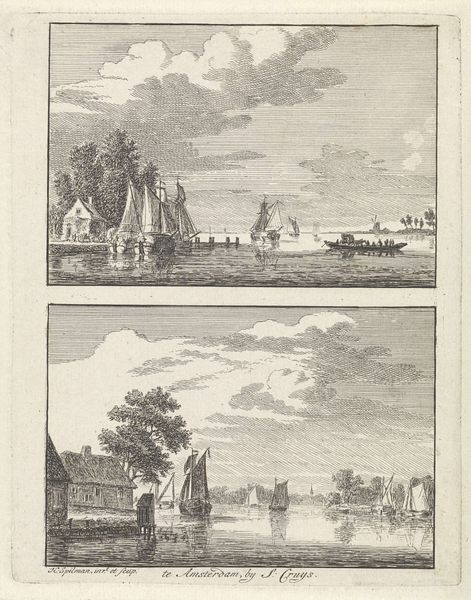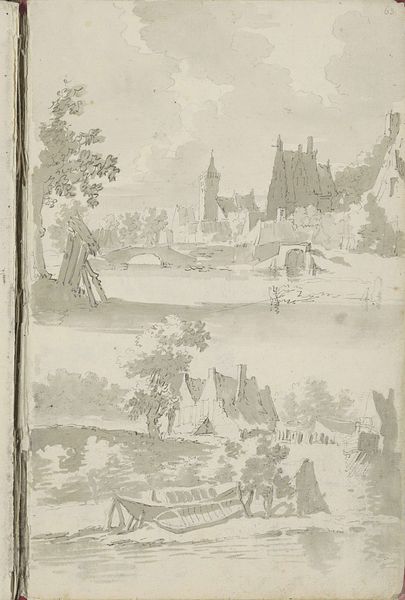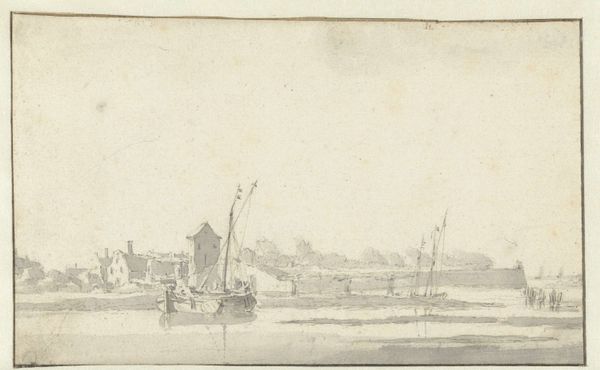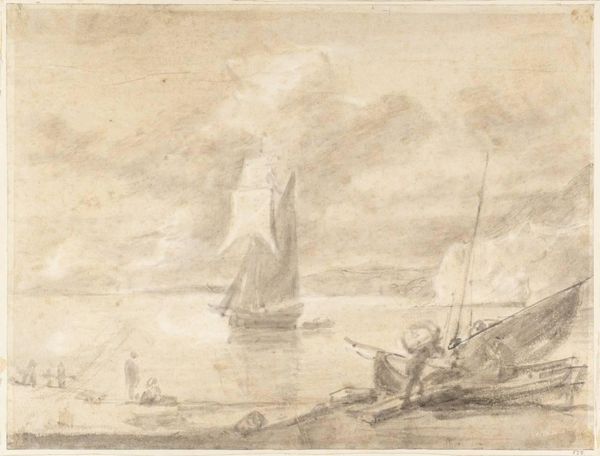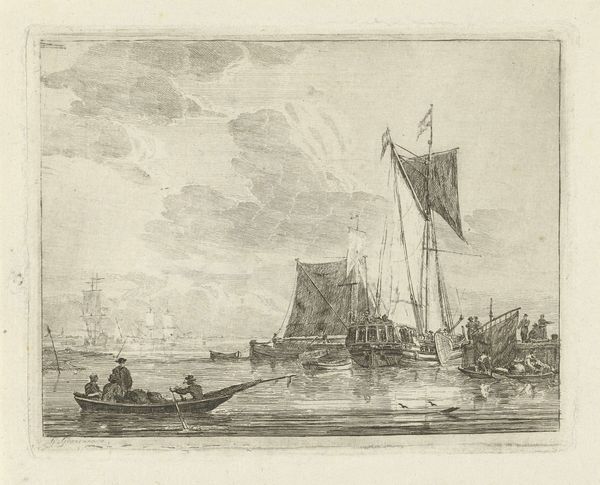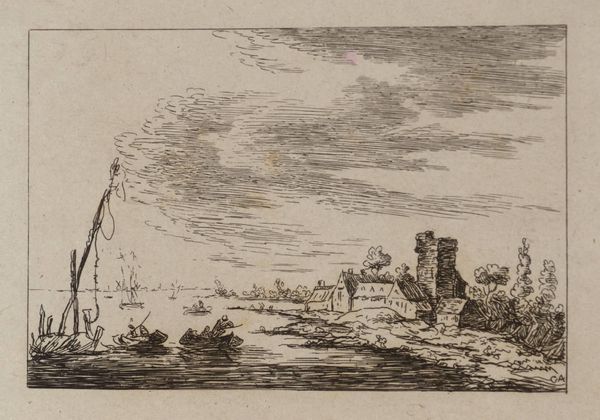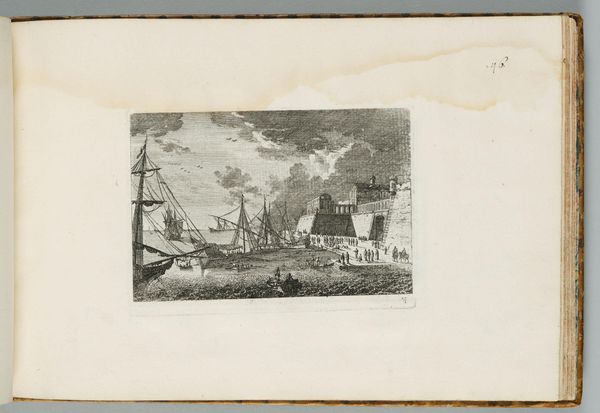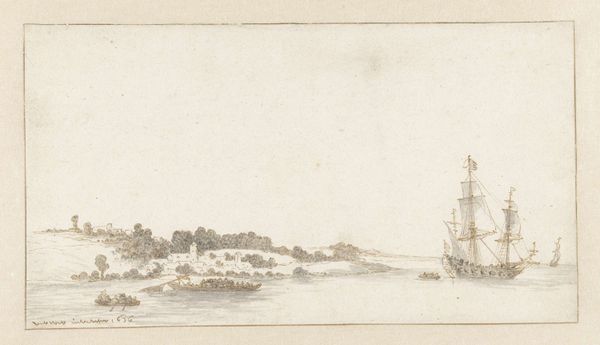
drawing, paper, ink, pencil
#
drawing
#
dutch-golden-age
#
pen sketch
#
pencil sketch
#
landscape
#
paper
#
ink
#
pencil
#
genre-painting
#
realism
Copyright: Rijks Museum: Open Domain
Curator: Looking at this piece, I'm immediately struck by the tranquility it evokes. There’s something so gentle about the way the pencil and ink capture these Dutch scenes. Editor: Indeed. What we have here is a drawing titled "Windmolen in een landschap en een dorpsgezicht," or "Windmill in a Landscape and a Village View," created by Barend Hendrik Thier around 1780-1800. The medium is a mix of pencil and ink on paper. It's a genre scene with realistic elements. Curator: The windmill, of course, is such an iconic symbol of the Netherlands. Beyond its functional purpose, grinding grain, it carries a lot of weight representing Dutch ingenuity and perseverance, doesn't it? It's almost a stoic guardian of the landscape. Editor: Precisely. The windmill became a potent symbol during the Dutch Golden Age. Windmills appear frequently in painting of the period. These powerful images of industry, of working landscapes, spoke to a rising merchant class, an expanding economy, and an increasingly self-reliant political entity in the region. But this drawing dates from a bit later; perhaps its simplicity signals a slight shift, a yearning for a quieter vision of Dutch life. Curator: You know, the sketches being placed one above the other on the page also give the work an interesting intimate feel, like looking through someone's travel journal. These buildings feel as if they hold a sense of cultural memory, of simpler times and closer communities. There’s even a tiny church spire visible in the lower scene, pointing skyward – faith always a prominent part of the landscape. Editor: That’s an excellent point about memory. These are definitely romanticized landscapes, though rooted in realism. Perhaps they harken back to a sense of idealized, localized identity as the Dutch Republic transitioned through significant socio-political shifts. Artists like Thier played a role in shaping public perception of what "Dutch" meant in a changing world. Curator: A world where these familiar symbols become touchstones, visual shorthand for core cultural values. It's a fascinating blend of practicality and idealism. Editor: Yes, examining such understated works helps to reveal those quieter undercurrents that influence the larger tides of history. Thanks for guiding us through. Curator: My pleasure.
Comments
No comments
Be the first to comment and join the conversation on the ultimate creative platform.
